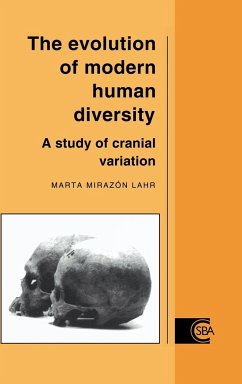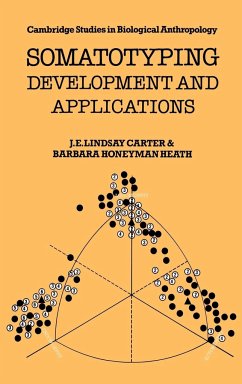
Applications of Biological Anthropology to Human Affairs
Versandkostenfrei!
Versandfertig in 1-2 Wochen
125,99 €
inkl. MwSt.

PAYBACK Punkte
63 °P sammeln!
The unique contribution made by biological anthropology to human welfare lies in the fundamental understanding it can provide of the dynamic interrelationships between physical and social factors. By understanding these patterns, we can interpret the significance of variation in such measures of human well-being in terms of the incidence of disease and mortality rates. Topics covered include reproductive ecology and fertility, nutritional status in relation to health, and the effects of pollution on growth. In the later chapters, the concepts of physiological adaptation, and Darwinian fitness ...
The unique contribution made by biological anthropology to human welfare lies in the fundamental understanding it can provide of the dynamic interrelationships between physical and social factors. By understanding these patterns, we can interpret the significance of variation in such measures of human well-being in terms of the incidence of disease and mortality rates. Topics covered include reproductive ecology and fertility, nutritional status in relation to health, and the effects of pollution on growth. In the later chapters, the concepts of physiological adaptation, and Darwinian fitness and its relation to individual physical fitness are explored.
Table of contents:
1. Introduction G. W. Lasker; 2. Reproductive ecology and human fertility P. T. Ellison; 3. Nutritional status: its measurement and relation to health C. G. N. Mascie-Taylor; 4. Pollution and human growth: lead, noise, polychlorobiphenol compounds, and toxic wastes L. M. Schell; 5. Human physiological adaptation to high altitude environments L. P. Greksa; 6. Darwinian fitness, physical fitness and physical activity R. M. Malina; 7. Human evolution and the genetic epidemiology of chronic degenerative diseases D. E. Crews and G. D. James; 8. The biology of human aging W. A. Stini; Literature cited; Index.
The unique contribution made by biological anthropology to human welfare lies in the fundamental understanding it can provide to the dynamic interrelationships between physical and social factors. By understanding these patterns, this book helps us interpret the significance of variation in such measures of human well-being in terms of the incidence of disease and mortality rate.
Topics covered in this book include reproductive ecology and fertility, nutritional status in relation to health, and the effects of pollution on growth.
Table of contents:
1. Introduction G. W. Lasker; 2. Reproductive ecology and human fertility P. T. Ellison; 3. Nutritional status: its measurement and relation to health C. G. N. Mascie-Taylor; 4. Pollution and human growth: lead, noise, polychlorobiphenol compounds, and toxic wastes L. M. Schell; 5. Human physiological adaptation to high altitude environments L. P. Greksa; 6. Darwinian fitness, physical fitness and physical activity R. M. Malina; 7. Human evolution and the genetic epidemiology of chronic degenerative diseases D. E. Crews and G. D. James; 8. The biology of human aging W. A. Stini; Literature cited; Index.
The unique contribution made by biological anthropology to human welfare lies in the fundamental understanding it can provide to the dynamic interrelationships between physical and social factors. By understanding these patterns, this book helps us interpret the significance of variation in such measures of human well-being in terms of the incidence of disease and mortality rate.
Topics covered in this book include reproductive ecology and fertility, nutritional status in relation to health, and the effects of pollution on growth.














